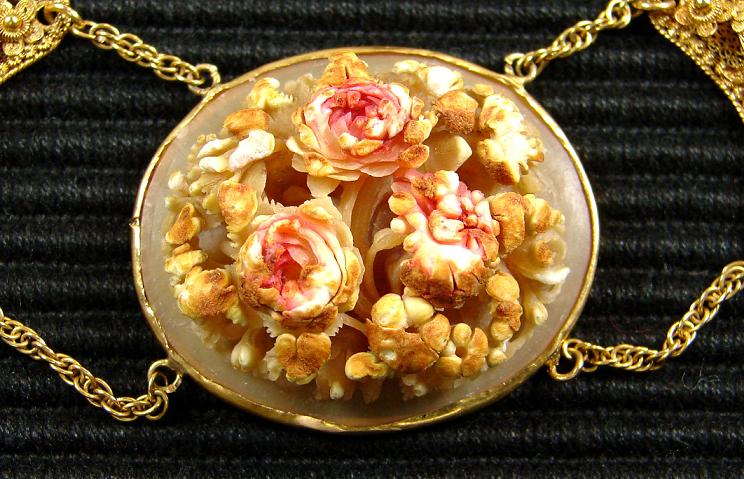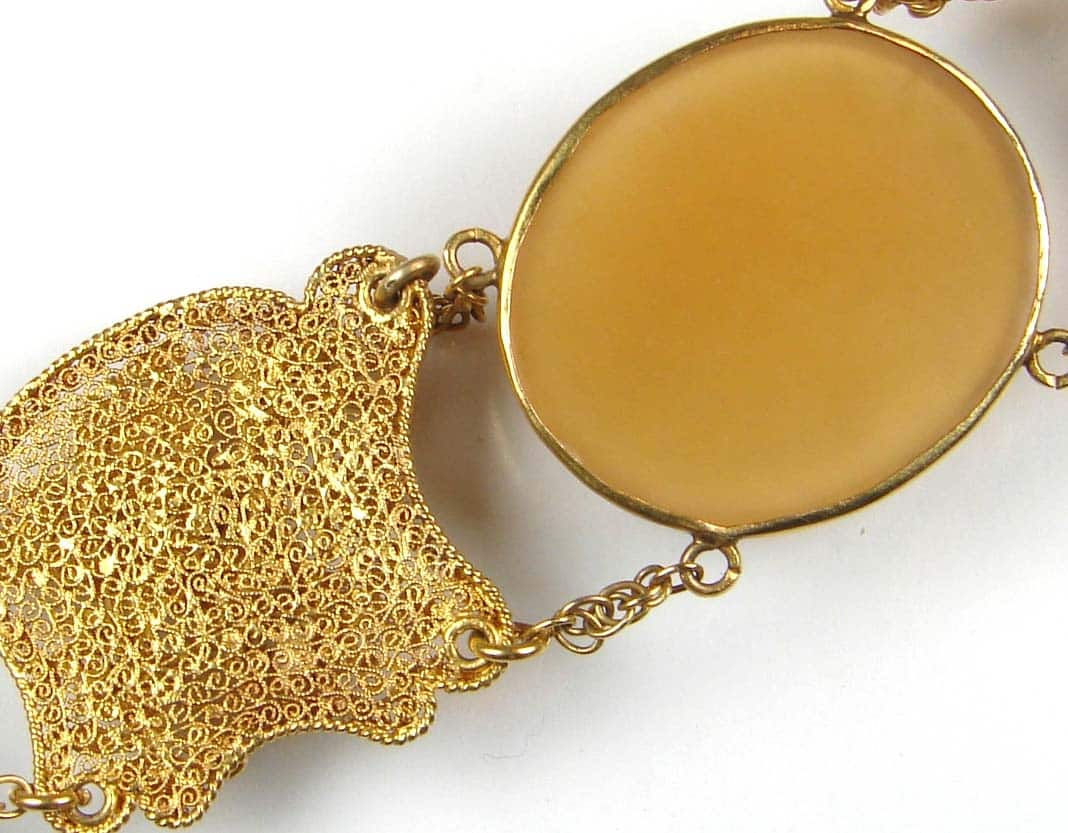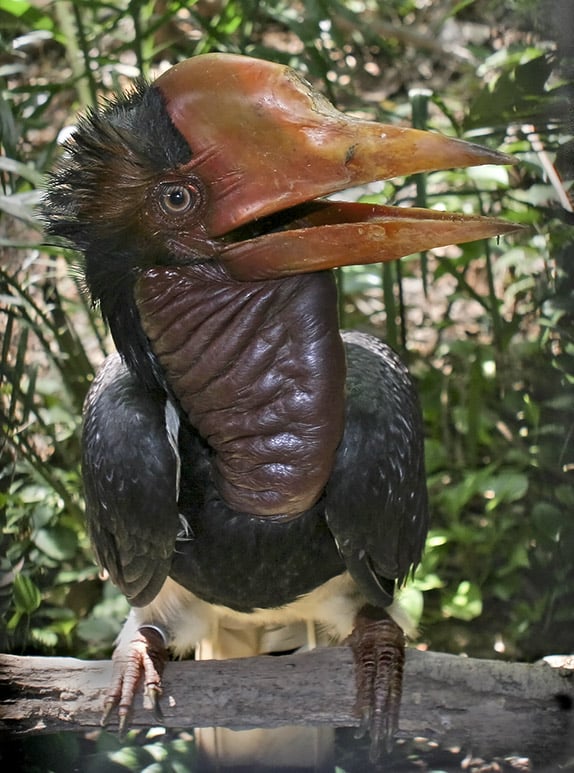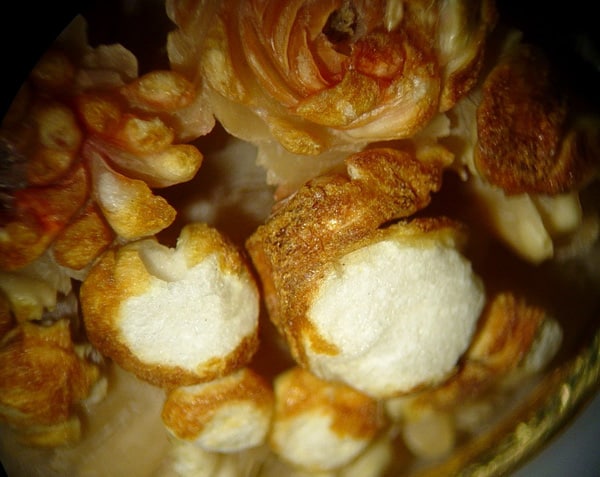In the fall of 2009 Stone Group Labs received an unusual item for identification. It turned out to be manufactured from hornbill ivory. Reported by Cara Williams:
We have examined the carvings in the necklace and earrings and determined they are a natural ivory from the Helmeted Hornbill bird, native to Indonesia. The hornbill is now an endangered species, but due to the apparent age of the jewelry, this item would be legal for trade. Hornbill ivory is not a true ivory as it is not a dentine material, but rather a keratin. Hornbill ivory of this nature was often carved from the lower layer of the hornbill casque for the western market. The upper area, with a strong red coloration, was traded to the Eastern market. The upper areas of these pieces yet show some of the red coloring. The rest is in the strong yellowish color of natural hornbill.




*Microscopic Observations Revealed a Layered Organic Structure Consistent with this Type of Keratin Material. Strong LW UV Fluorescence Further Confirms the Identity of this as Hornbill Ivory. Finely Detailed, High Relief, Floral Carving is Typical of the Designs Carved for the Western Market from this Material During the 19th Century. No Evidence of Artificial Coloration was Observed. Minor Damage in the Form of Chipping was Observed on Several of the Carvings Due to the Layered, Brittle Nature of Hornbill Ivory.
Sources
- www.info4antiques.org
- College of Science and Technology Central Michigan University
Gems & Gemology: The Quarterly Journal of The Gemological Institute of America.
Hornbill:
- Fall 1973, Hornbill – Ho Ting by Argimiro Santos Munsuri